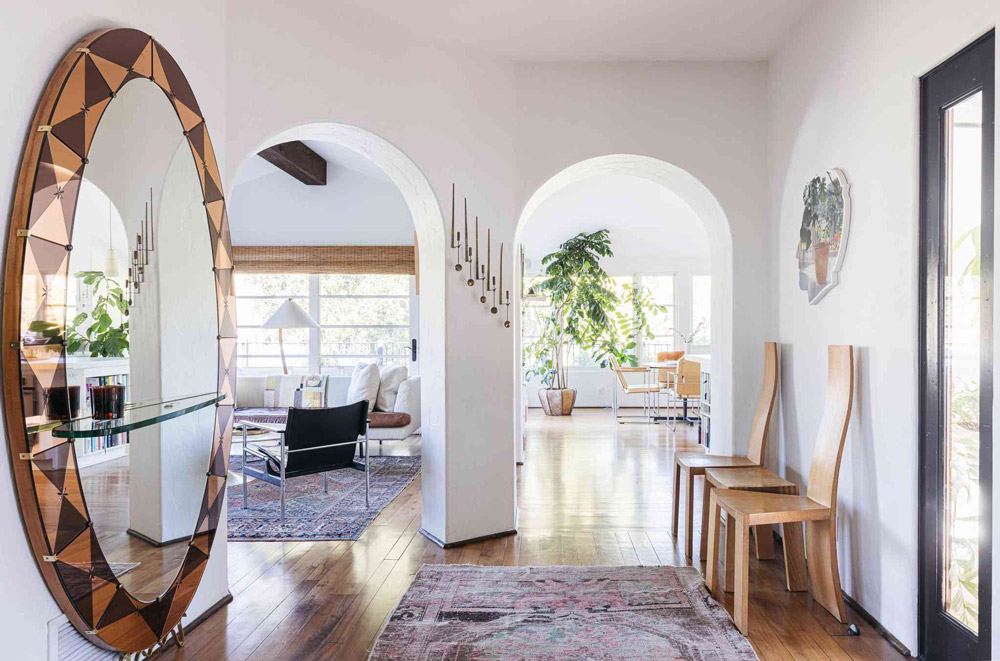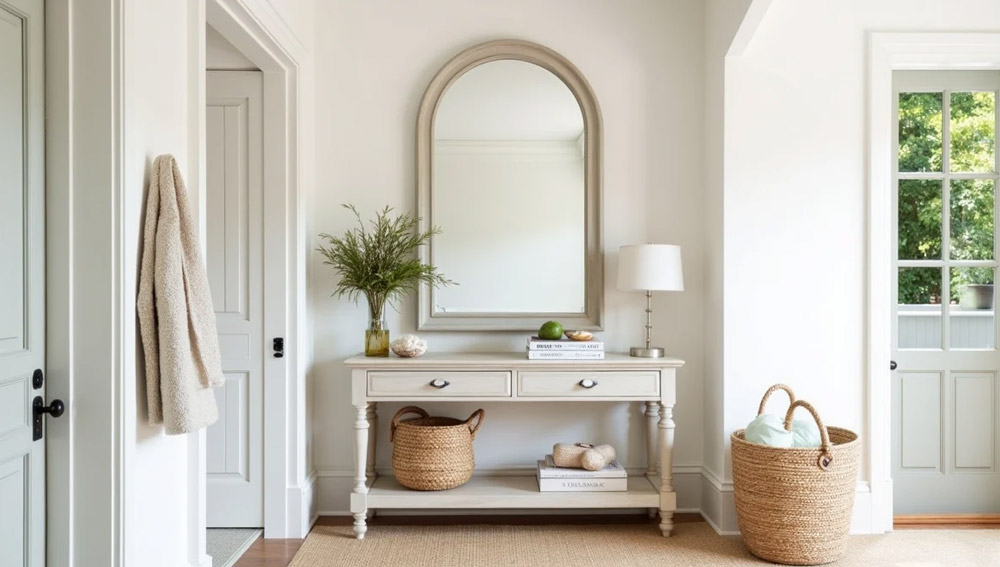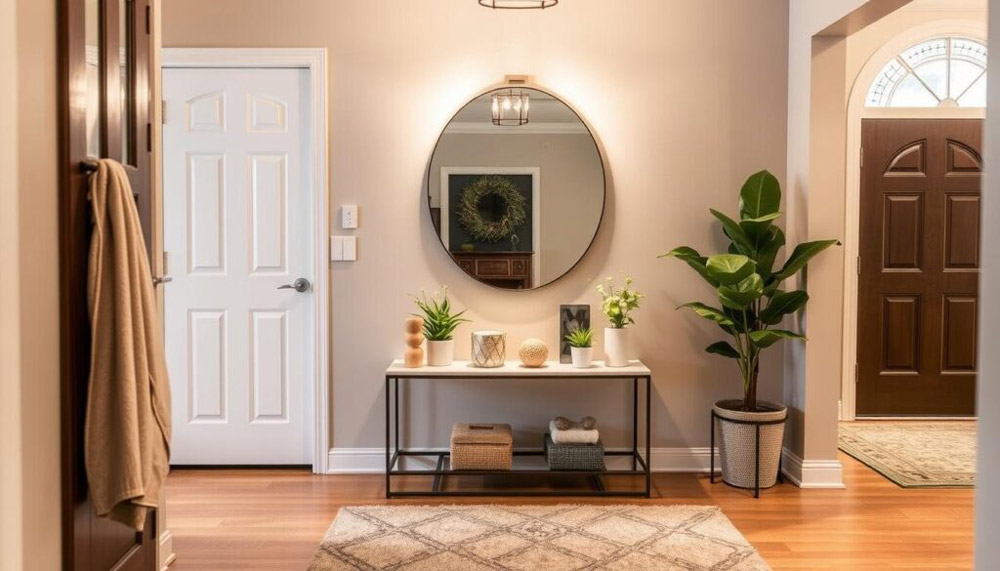A statement mirror can be one of the most impactful design choices you make for an entryway or hall. It’s often the first thing people notice when entering your home and can instantly convey your style, make the space feel larger, and reflect light to brighten up dim corners. But picking the right mirror is more than just choosing a shape or size you like—it requires consideration of proportions, design harmony, placement, and purpose.
Here’s how to thoughtfully select a statement mirror that elevates your space while serving both functional and aesthetic roles.
Contents
Why a Statement Mirror Belongs in Every Entryway
An entryway is your home’s handshake—it sets the tone for what’s to come. A statement mirror enhances this area by doing several things at once. It acts as a visual anchor, draws the eye, reflects light to make the space feel bigger and brighter, and gives you one last glance before heading out the door.
In narrow hallways or small foyers, mirrors can expand the feel of the room without any major remodeling. Whether your style is sleek and modern, rustic farmhouse, or bold and eclectic, there’s a statement mirror that can complement your home’s aesthetic.

Factor 1: Size and Scale Matter
One of the most common mistakes people make when selecting a mirror is choosing one that’s too small or too large for the space. In entryways, a mirror should generally be proportional to the furniture it’s above—typically a console table, bench, or credenza.
If you have a console table that’s around 48 inches wide, consider a mirror that’s between 24 and 36 inches wide. The mirror shouldn’t extend beyond the edges of the furniture beneath it. A larger, full-body mirror can also work in tall, narrow hallways—especially if placed on the floor and leaned against the wall for a relaxed, modern look.
For narrow hallways, long vertical mirrors can help elongate the space, while round or oval mirrors can soften hard edges and bring balance to angular architecture.
Factor 2: Shape and Frame Style
The shape of your mirror has a strong visual impact. Round mirrors create a softer, more organic feel and pair beautifully with minimalist or Scandinavian décor. Rectangular mirrors are more traditional and often used for their symmetry. Arched or irregular shapes are excellent for making a design statement, adding a contemporary or artistic flair.
When it comes to frames, think about the materials already present in your entryway. If you have brass light fixtures or wooden flooring, you can echo those materials in the mirror’s frame. Black metal frames lean modern and industrial, while wood frames offer warmth and a natural texture that works well in farmhouse or boho spaces.
If your walls are already heavily decorated or patterned, opt for a simpler or frameless mirror to avoid visual clutter.
Factor 3: Functionality
Statement mirrors aren’t just about looks—they’re also practical. In an entryway, they give you a chance to check your outfit, hair, or makeup before stepping out the door. For narrow halls with limited lighting, mirrors reflect both natural and artificial light to help brighten the area.
If your mirror’s primary role is functional, make sure it’s placed at an appropriate height for full facial or body viewing. For purely decorative mirrors, you have more freedom to play with position and height.
Matching with Existing Décor
Your statement mirror should feel like a natural extension of your entryway’s design. If you already have a color palette, stick within that range. Mirrors with bronze, black, or matte gold frames are extremely versatile and can complement a wide variety of interiors.
For example, a mirror with a distressed wooden frame complements rustic or coastal themes, while a frameless or metal-edged mirror works well in ultra-modern spaces. For eclectic styles, consider mirrors with unique shapes or artistic frames.
Additionally, if you’re styling around a mirror, consider adding wall sconces on either side for symmetry, a narrow console table below for balance, and a decorative bowl or vase for added texture and color.

Mirror Placement and Installation Tips
Proper placement is essential for maximizing your mirror’s impact. As a rule of thumb, the center of the mirror should be about 57 to 65 inches from the floor. If placed above furniture, aim for 6 to 8 inches of space between the top of the furniture and the bottom of the mirror.
Use appropriate hardware, especially if the mirror is heavy. For added security, install wall anchors or use professional-grade mirror mounting kits. In earthquake-prone areas, consider safety clips or adhesive backing to prevent tipping.
For renters or those avoiding wall damage, consider leaning a tall mirror against the wall or using removable adhesive hooks for lightweight mirrors.
Trending Statement Mirror Styles for 2025
Mirrors are as much a part of home fashion as furniture or paint colors. In 2025, we’re seeing strong trends toward organic shapes, asymmetrical designs, and warm, earthy materials. Think mirrors with irregular curves, brass-rimmed finishes, and natural wood tones.
Some popular styles include:
- Wavy-edged mirrors: Perfect for a modern or Gen Z aesthetic
- Vintage-style gold framed mirrors: Bring a sense of grandeur and elegance
- Boho rattan mirrors: Add warmth and natural texture
- Industrial black framed mirrors: Offer bold contrast in minimalist spaces
Pair these with textures like linen, jute rugs, and plants for a complete, well-rounded entryway.
Mistakes to Avoid
While it’s easy to get caught up in style, avoid these common mistakes:
- Choosing a mirror that’s too small: It will look lost and fail to make an impact.
- Ignoring lighting: Mirrors should reflect light—not face directly into a dark corner.
- Clashing styles: A hyper-modern mirror in a traditional setting can feel jarring unless purposefully styled.
- Hanging too high or low: Stick to eye level for optimal viewing and proportion.
Final Thoughts
A statement mirror in your entryway or hallway is more than just decoration—it’s a reflection of your style and a powerful design tool that can transform a space. Whether you go bold and sculptural or clean and functional, the right mirror adds personality, light, and dimension.
By considering scale, shape, functionality, and style coordination, you can choose a mirror that not only fits your space but elevates it.
If you’re ready to shop or style your space, use this guide to avoid missteps and make your mirror a feature worth reflecting on.

